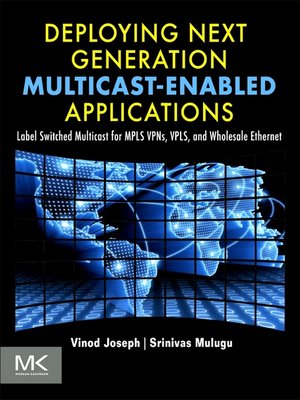Deploying Next Generation Multicast-enabled Applications
ebook ∣ Label Switched Multicast for MPLS VPNs, VPLS, and Wholesale Ethernet
By Vinod Joseph

Sign up to save your library
With an OverDrive account, you can save your favorite libraries for at-a-glance information about availability. Find out more about OverDrive accounts.
Find this title in Libby, the library reading app by OverDrive.



Search for a digital library with this title
Title found at these libraries:
| Library Name | Distance |
|---|---|
| Loading... |
Deploying Next Generation Multicast-Enabled Applications: Label Switched Multicast for MPLS VPNs, VPLS, and Wholesale Ethernet provides a comprehensive discussion of Multicast and MVPN standards—next-generation Multicast-based standards, Multicast Applications, and case studies with detailed configurations. Focusing on three vendors—Juniper, Cisco, and Alcatel-Lucent—the text features illustrations that contain configurations of JUNOS, TiMOS (Alcatel's OS), or Cisco IOS, and each configuration is explained in great detail. Multiple- rather than single-vendor configurations were selected for the sake of diversity as well as to highlight the direction in which the overall industry is going rather than that of a specific vendor. Beginning with a discussion of the building blocks or basics of IP Multicast, the book then details applications and emerging trends, including vendor adoptions, as well as the future of Multicast.The book is written for engineers, technical managers, and visionaries engaged in the development of next-generation IP Multicast infrastructures.
- Offers contextualized case studies for illustrating deployment of the Next Generation Multicast technology - Provides the background necessary to understand current generation multi-play applications and their service requirements - Includes practical tips on various migration options available for moving to the Next Generation framework from the legacy







